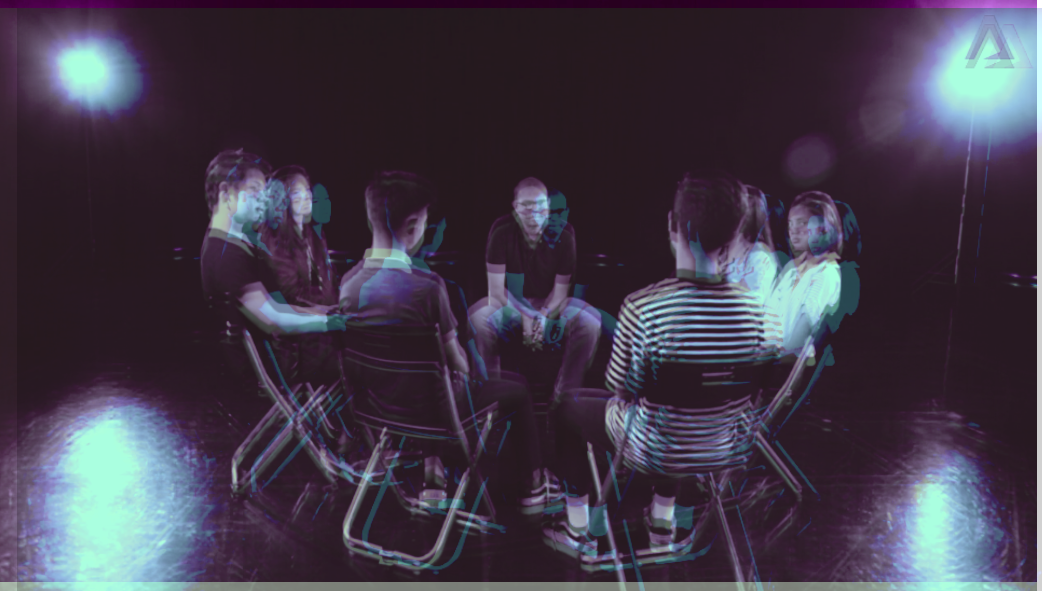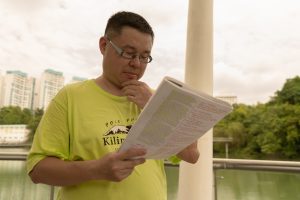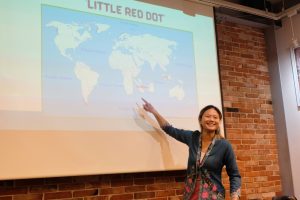First, a contentious soundbite gets taken out of context and blown out of proportion.
Last month, this was “I personally feel that a mixed class suggestion may not be very viable”, said by the “Indian IP student” in the CNA documentary, ‘Regardless of Class’.
Following that, we, the collective public, lose our minds.
After all, it reinforces everything that anyone who has been following the inequality narrative knows by heart: students from IP streams are elitist; people who are high SES cannot empathise with people who are lower SES; the privileged are assholes.
With almost everyone having observed or experienced some version of the sentiment expressed in this soundbite, it’s unsurprising that it manages to dredge up visceral emotions: anger, frustration, and resentment. Underpinning these emotions, there’s a heightened sense of social injustice, as though we’ve only just realised Singapore is not so perfect after all.
Inequality is now ‘trending’. Media platforms step in, seemingly to restore balance and nuance in the prevailing narrative. The topic is approached from a range of enlightening but emotional op-eds, revolving around why the poor make bad choices, whether meritocracy promotes elitism, and whether the education system truly acts as a social leveller.
We hope that when the buzz dies down, we’ll be left with clear, actionable solutions to tackle inequality. But the result is glaringly different: we come away with nothing new.
We remember only the soundbite, the faces of those involved, and our collective rage for one simple reason: the entire spectacle panders to what we want to see and validates what we’re willing to believe.
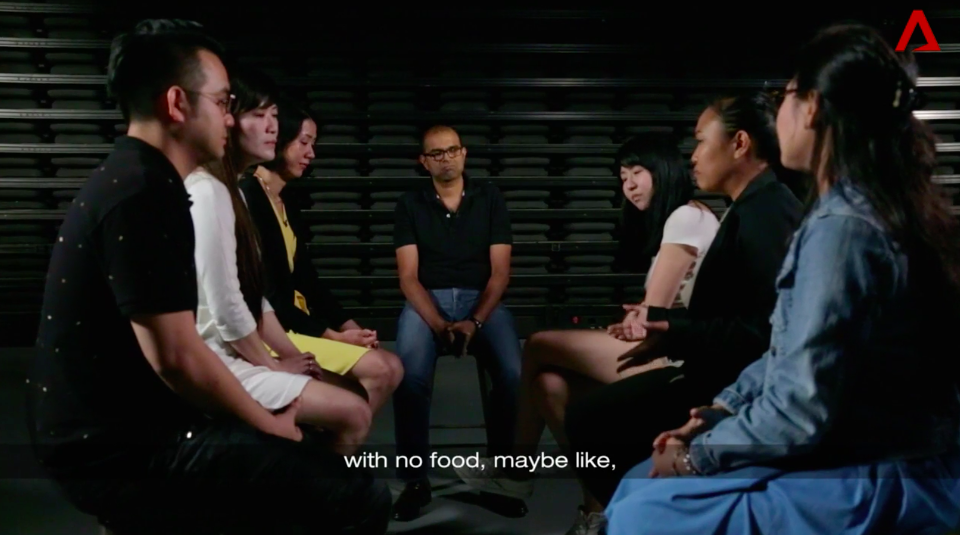
In particular, the most controversial segment involved Senior Minister of State for the Ministry of Communications and Information, Dr Janil Puthucheary, in conversation with three students from the Integrated Programme stream, one from the Normal (Academic) stream, and two from the Normal (Technical) stream. These students were posed uncomfortable questions, such as whether they had good friends from other streams, and if they thought students from different streams should be placed in the same class.
Through long shots capturing the downcast eyes and tense body language of the participants, the Normal stream students were cast in a sympathetic light. Contrastingly, the IP stream students came off as arrogant, elitist, and unapologetic.
Naturally, online comments expressed sympathy for the Normal students and contempt for the IP students.
In hindsight, my discomfort didn’t just stem from the stark reflection of elitism displayed through mere teenagers. I also felt uneasy with the documentary’s simplistic portrayal of Kareena (or “the Indian IP student”, as she’s better known in online comments) that resulted in personal attacks against her.
I wanted to know if her comments on camera were what she really thought, given that she’s young and presumably inexperienced in speaking to the media.
So I reached out.
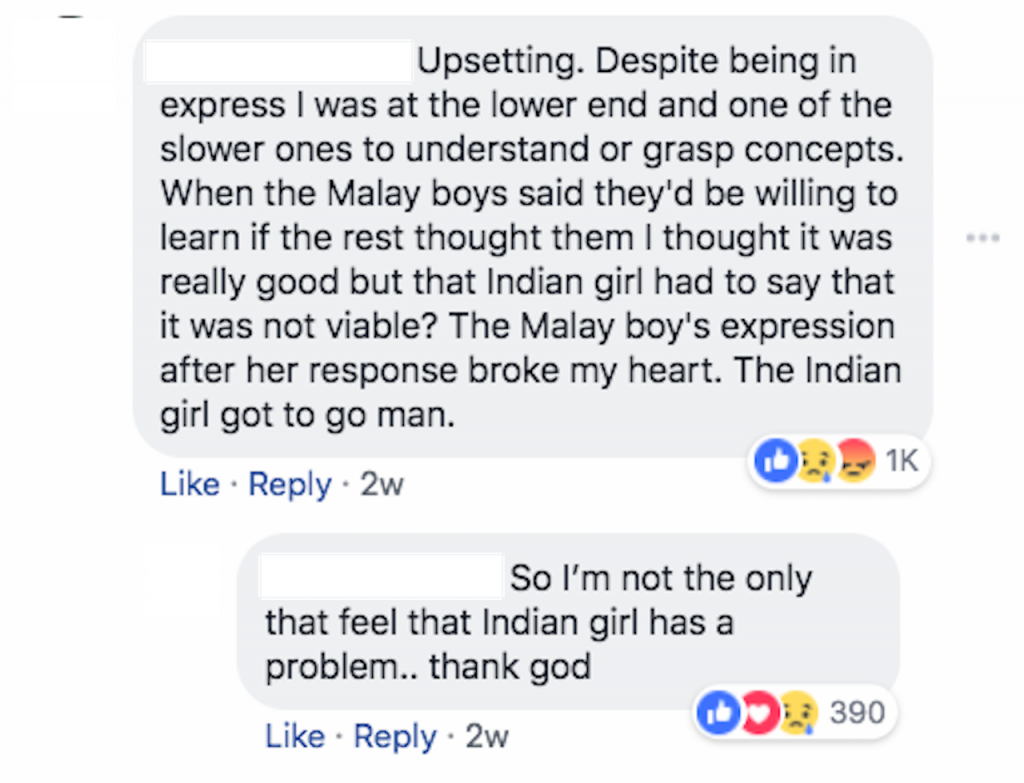
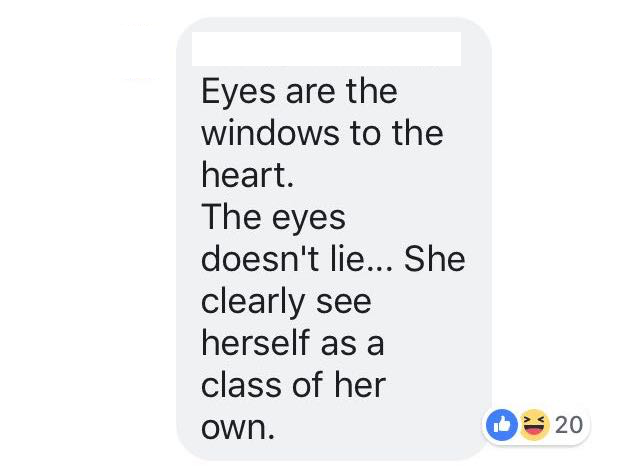
I was first surprised to learn that Aufa, depicted in the documentary as someone who merely hopes to pass all his subjects because he’s been failing since Secondary One, wants to be an aerospace engineer. According to Kareena, who supports his dreams, he hopes to pursue the course in ITE and eventually in polytechnic. That information was omitted from the final cut.
Kareena also addressed the context of her viral comment, the one about how it wasn’t “viable for students of different streams to be in the same class”.
When Dr Puthucheary asked about the feasibility of a mixed class, the N(T) students were the first to answer. Next, Dr Puthucheary asked whether they found it awkward because the group had “all fallen into this awkward silence”. However, no one knows if this awkward silence was caused by being in the presence of strangers in an unfamiliar studio environment, or by a supposed ‘social divide’.
After all the students agreed that it felt awkward, Kareena thought Dr Puthucheary was still expecting an answer from her about mixing different streams in one class.
She said, “I answered that I didn’t think a mixed class solution was very viable, because it may even increase the gap if these students feel like they cannot cope and give up completely.”
Explaining her studio comments to me, Kareena added, “I didn’t want less academically-inclined students to struggle just because a different class pace might be unsuitable. If a class’s pace is more suited to a specific demographic, students in the class might learn better. But I’m not a policymaker or educationalist, so I’m not very well read in these topics.”
In hindsight, Kareena admitted that she could have phrased ‘give up completely’ as ‘they might struggle more’. The former, she conceded, is “a bit too much of a definite, absolute comment”.
More importantly, she told me, “I continued to say that it would take more than a mixed class to help the problem. Having programmes where students from different streams can volunteer to help each other and teach each other different things would help interaction. They can also teach us about subjects they learn that we hardly come across, like Design & Technology. It’s like a peer-to-peer mentoring scheme.”
She also mentioned that she used to have programmes like this in her primary school, where students would partner up to help each other.
Continuing, she said, “There was this boy I was paired up with. I felt like he understood [the subjects] better as I spent more time with him than the teacher could. Even though I was only 12 and not the best teacher, I did see some a-ha moments come to him.”
Kareena’s words about the peer-to-peer mentoring didn’t make it to the screen.
Instead, the average viewer remembers only the final edit: first Kareena’s brief, ‘elitist’ answer, then an abrupt cut to Aufa’s seemingly dejected face (that many have misconstrued as him tearing up).
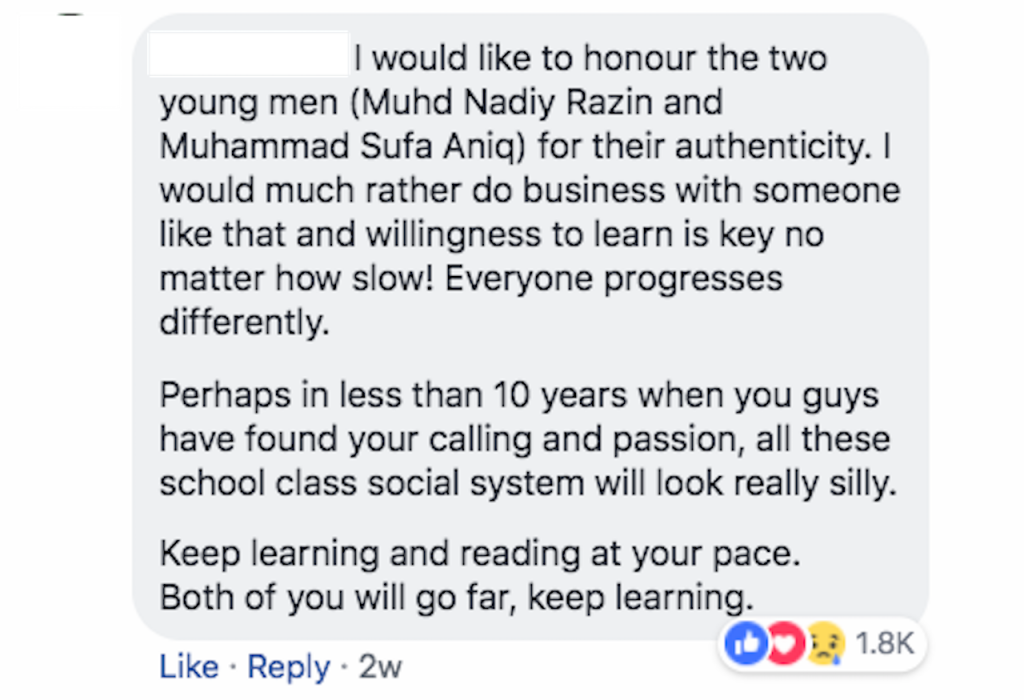
What was aired was her remark about how it would take a lot more effort for her to make friends from other streams. The omission of the former fact begs the question: was this meant to reinforce the impression that IP students have difficulty befriending Normal students?
“The reason I said it takes more effort is because in an IP school, it is generally tougher to meet students from different streams due to the lack of opportunity,” she explained.
“The question was more about meeting students from different streams or educational backgrounds through school activities than personal ones. So I do have personal friends but I don’t usually encounter them through school activities. I actively go out and make friends, such as online or with my neighbours.”
When Dr Puthucheary asked how students felt talking to those from other streams, the N(T) students commented on the “power” English of those from the IP streams.
That was aired.
What wasn’t aired was Kareena and Stephanie, another IP student, saying that “talking to [friends from Normal streams] wasn’t difficult”. It was “just different in a good way”.
Kareena even added, “A lot of people in my school talk about being conventionally successful a lot and having big ambitions. It’s kinda stressful. I find it refreshing to talk to [friends from different streams] because they often have a different perspective of success and what they want. So I do appreciate talking to them whenever I get the opportunity.”
“And you mentioned this during the chat?” I asked.
“Yes,” she confirmed.
Despite the flak she’s gotten, Kareena doesn’t blame the public for reacting the way they did. She understands that they have not seen the whole story.
At the same time, she’s “quite heartened by positive remarks” from other strangers who have contacted her online to tell her that they hope she’s okay.

In the documentary, the students are asked about their expectations of themselves. Joey then comments that her parents don’t have much expectations for her. What isn’t shown is her saying that she would like to score an A for her better subjects and at least a B for the rest.
Students were also asked about their career aspirations.
Joey said she wanted to be a “businesswoman to open up [her] own business”. Unfortunately, the only aspiration that made it to the final cut was Kareena’s goal to pursue a career “in the foreign affairs”.
Additionally, the documentary portrays Joey insinuating that she doesn’t hang out with Express students in her school. However, I found out that Joey actually shared that she’s “really close to some of [her] Express friends outside”. When they’re free, they would “usually hang out”.
All of this, as with the portions of Kareena’s sharing that didn’t make the final cut, were omitted. Which is a pity, because these responses would have added balance to the documentary. They would have driven home the point that the less academically inclined are not singularly defined by not being good at school.
Instead, CNA chose to edit the discussion in a way that reiterates trite stereotypes. Perhaps Joey’s complete answers simply didn’t align with how they thought an N(A) student should behave.
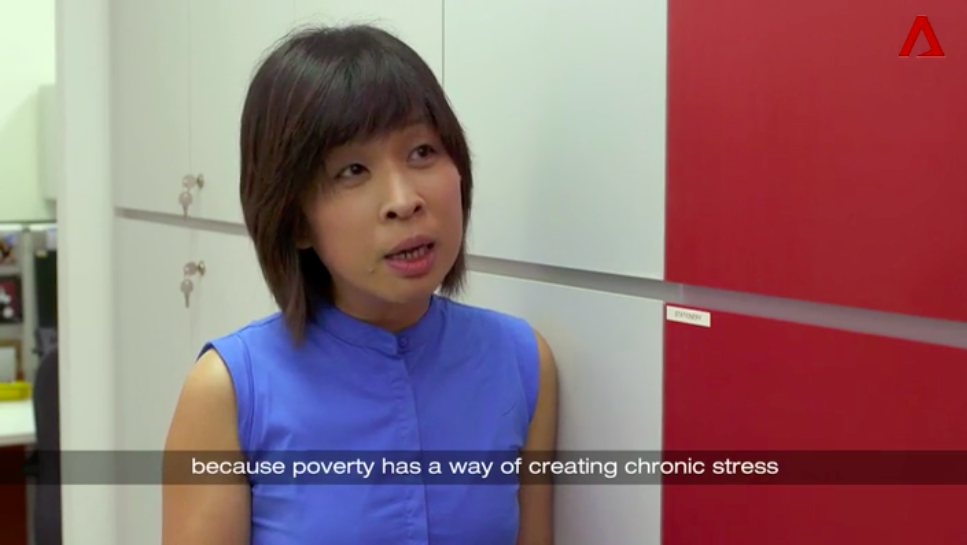
In the documentary, Cindy states that for the poor, access to resources is one thing, but knowing how to use these resources is another. One of the solutions suggested to bridge this gap involves early education and support for children from low-income families that doesn’t depend on their parents’ marital status, work status, or socioeconomic status.
I was told that Cindy actually pushed for “more government support”, which didn’t make it to the screen. I also learnt that while speaking off-camera, “Cindy would try to share what it’s like on the ground and the issues that beneficiaries face, but Dr Puthucheary would quote statistics from the Ministry of Social and Family Development.”
While statistics and numbers are important, “Cindy and her staff are on the ground and see these issues every day”. As such, “they have a better grasp on the real life issues”.
In particular, a salient point that didn’t make it to the screen was how rental housing policies could change to assist the low-income.
“Cindy talked about how these families are multi-stressed. They face a lot of issues, which are all interconnected. She mentioned rental housing lease terms being too short. Extending them or making it easier to renew would reduce the stress on families, because at least one factor [in their lives] would be constant,” said our source.
Do note, however, that we were cautioned that this wasn’t verbatim because filming happened months ago.
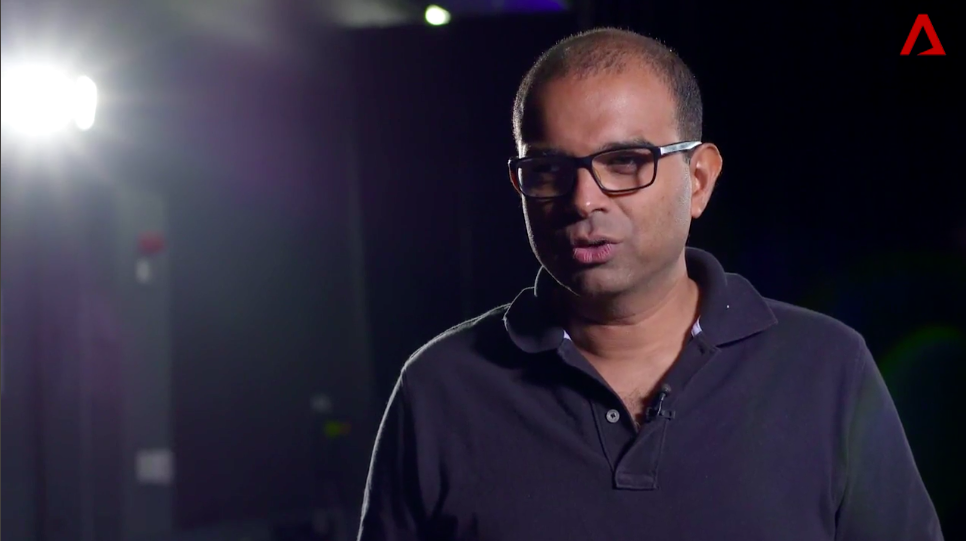
I questioned whether CNA was commissioned by Dr Puthucheary, OnePeople.sg, or the Ministry of Communication and Information; if participants were privy to how the final edit would portray them; whether participants had signed a consent form that allowed CNA to use their footage in any way to serve the main message.
To date, CNA hasn’t responded.

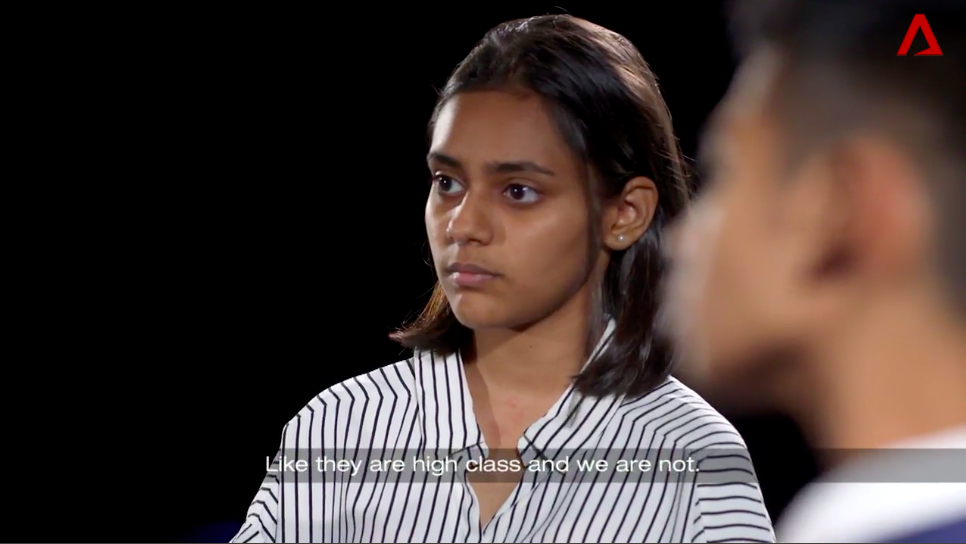
So let’s address the elephant in the room. Most of the IP students were Chinese, while both the Malays represented the N(T) stream. Some may argue that this is merely reflective of society, which is the point of a documentary.
If, however, CNA was truly serious about tackling inequality, it should have started with dismantling our internal biases. This includes understanding the power that visual media has to shift perspectives, rather than relying on lazy stereotypes to send a message.
In other words, it would have been more productive to see at least one Chinese N(T) student and one Malay IP student on screen.
Next, because Kareena is painted as a villain, the N(T) students in the same scene are inadvertently victimised. Audiences end up feeling so sorry for the N(T) students, it borders on patronising. And while sympathy is easy and not necessarily an undesired outcome, in reality, very little of this translates into adequate, lasting social and policy changes.
The villain versus victim cliché ends up implying that being privileged is a moral failing, thereby shifting the attention away from how Singapore’s policies may in fact have had a part in shaping inequality.
In this case, the N(T) students were also praised for being ‘authentic’ with their feelings, as if their stories would be less valuable if their discomfort hadn’t been as raw.
Since the documentary went live, several well-argued critiques have stated that it’s “outright unethical” for CNA to expect the disenfranchised to be vulnerable, all in return for clicks, shares, and views. And rightly so—the lives of the underprivileged are not neatly packaged lessons for the privileged to learn about inequality. Neither are the lower income responsible for educating those who are born with a silver spoon in their mouths.
For CNA to create a ‘safe space’ for participants to share their stories, only to turn what they shared into a caricature of their actual lives, makes a painful mockery of the issues and underprivileged individuals that the documentary hoped to raise awareness of.
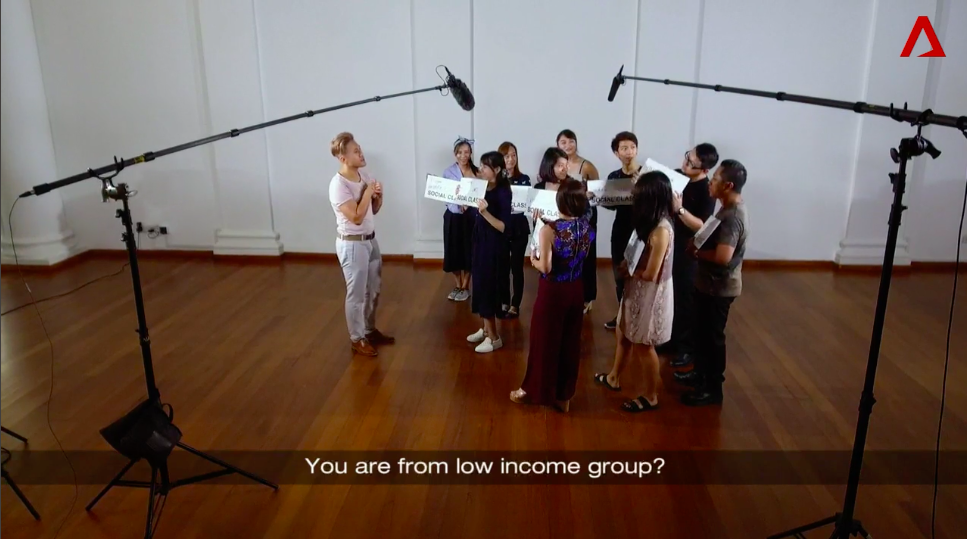
Still, stories are messy. People rarely fit into anyone’s preconceived mental boxes. So when there is ‘extra’ or unexpected information that doesn’t click with the anticipated narrative, the responsible thing to do is to adapt the agenda.
In CNA’s defence, I also understand the significance of personal anecdotes, like those featured in ‘Regardless of Class’. The media traditionally depend on interesting and relatable stories to explain abstract concepts to the layman. By humanising cold policies, the average citizen finds a reason to care about pertinent issues that affect their lives.
Yet the truth is that stories live up to their potential only when they are used responsibly and fairly. Unfortunately, the questions posed in the documentary wrest this control from all the participants, placing the burden of carrying a national conversation on their individual experiences.
When tackling sensitive and multi-dimensional topics (like inequality) reduces participants to their visceral, emotional responses, the complexities of their perspectives are conflated into a simplified, palatable narrative that’s primed for virality.
As a result, the average viewer usually fails to make logical connections between the issue and the reality that is the role of the government or the economy. For instance, the blame of inequality was squarely placed on those like Kareena, who has conveniently become the face of elitism. Such personal attacks only distract us from confronting the real causes of inequality.
If CNA wanted to have a productive conversation about inequality, the most effective way would have been to give full airtime to the marginalised. These groups are often acutely aware of their circumstances and their place in society, and know best what works for them. Their analyses about their situations are often the most insightful and detailed.
For an industry that frequently claims to give a voice to the voiceless, the media need to listen when the marginalised speak. The role of the media should be to educate and inform, and ideally, to present unadulterated versions of alternative perspectives.
Accordingly, the public must hold us accountable when the narrative around inequality becomes an orchestrated spectacle by the powerful to serve the privileged; to give the illusion of ‘something being done’.
In the wake of the documentary, many were grateful that we were finally having this ‘uncomfortable’ conversation—but at the expense of those who were unwittingly thrown under the bus by how the documentary portrayed them.
As our first commentary pointed out, this can cause us to gloss over institutionalised factors that shape inequality. However, if the documentary meant to feed our resentment and sense of injustice, and not solve any problems, then it has succeeded.
I want to make this clear: doing a good thing the wrong way can turn it into a bad thing. When we don’t talk about inequality the right way, we end up perpetuating myths about how things in society are the way they are.
Yes, it’s convenient to recycle existing views and stick with the norm, even when one has the power to change things. But when we talk about inequality this way, this isn’t benign. We may think we’re just maintaining status quo, but we’re actually taking several steps back.
If you’ve been paying attention, this is what talking about inequality looks like.
But it doesn’t have to be this way.

